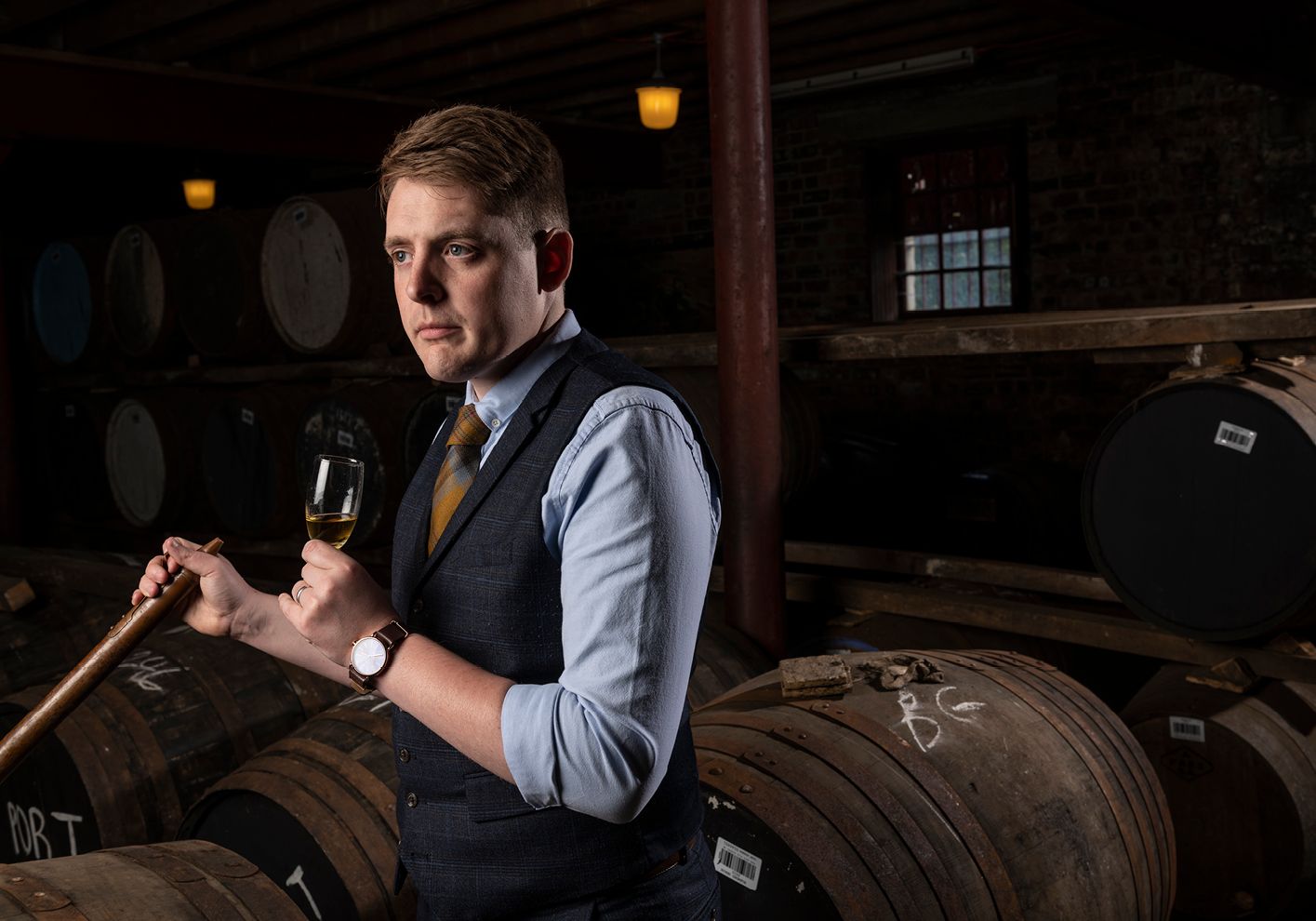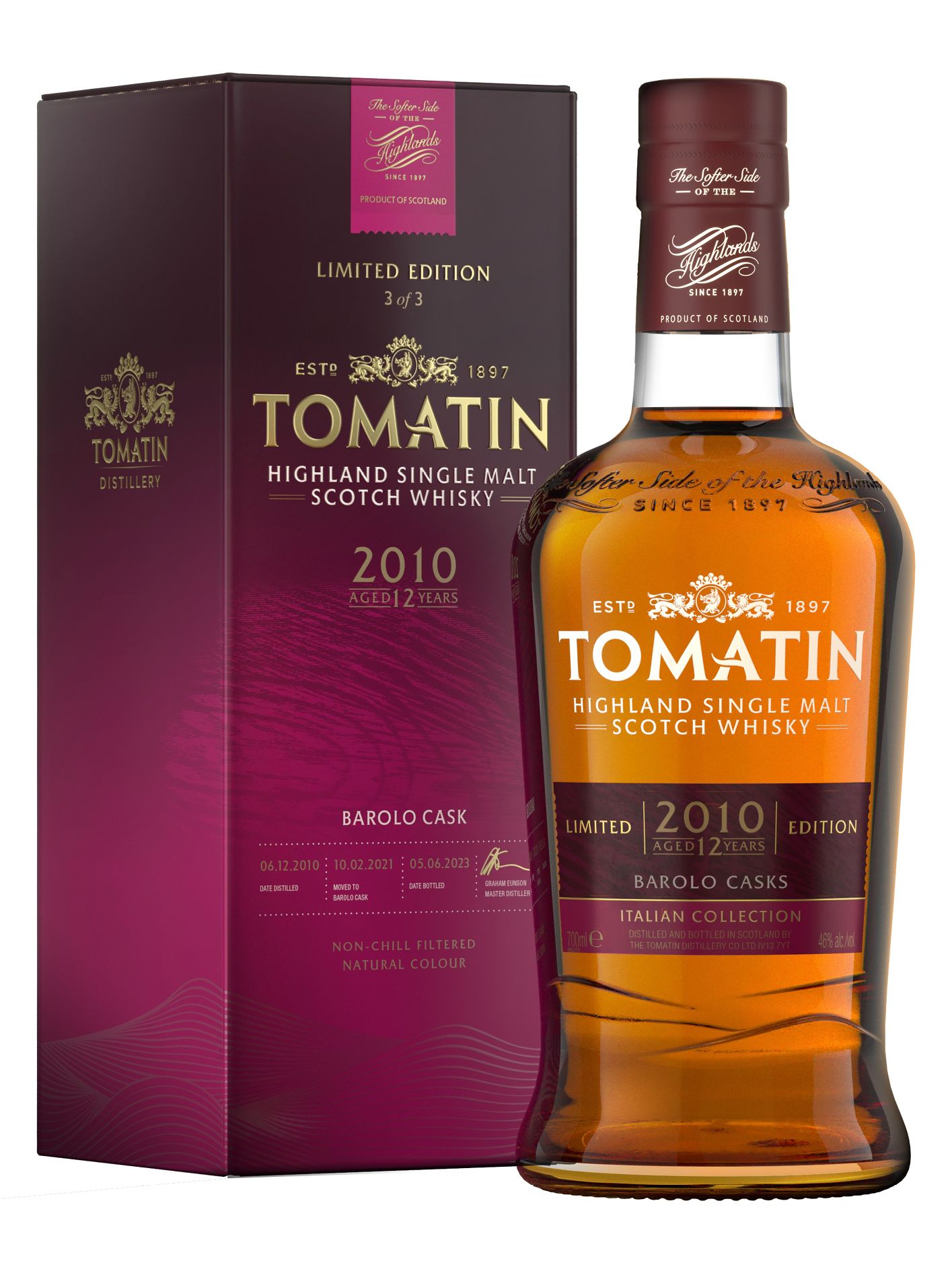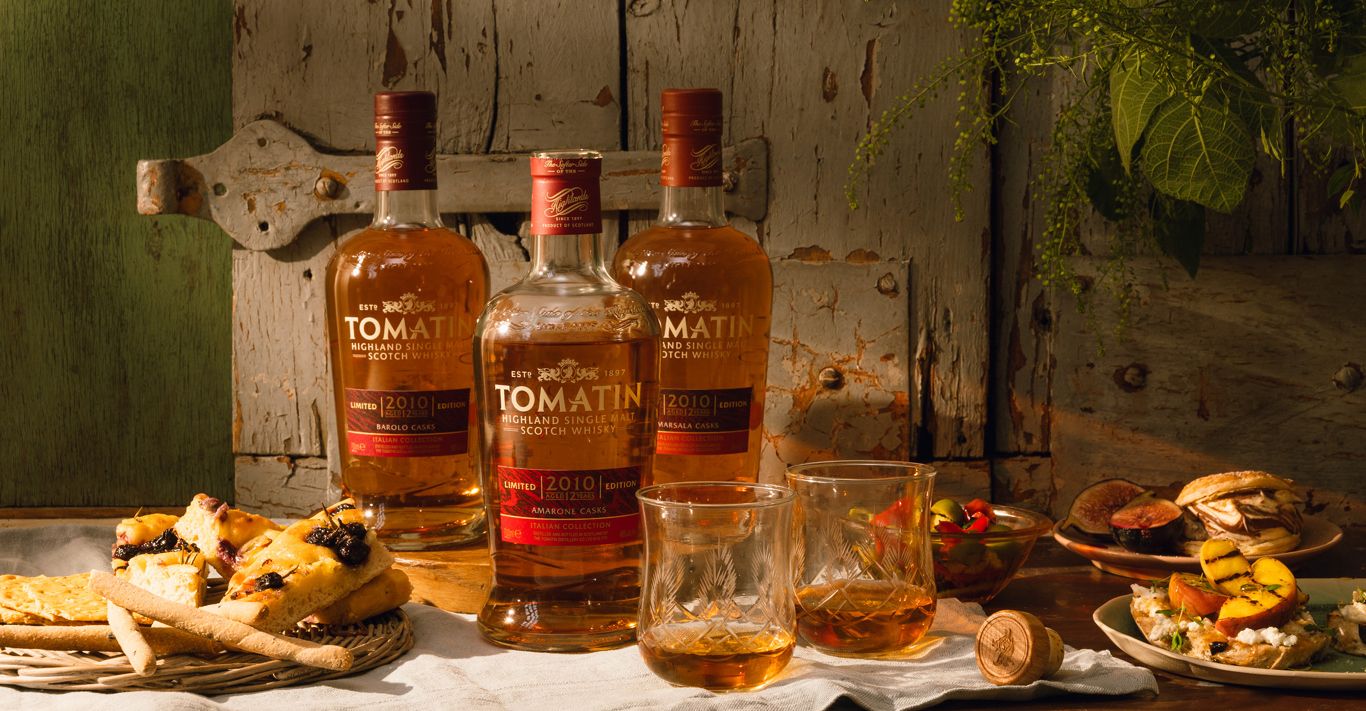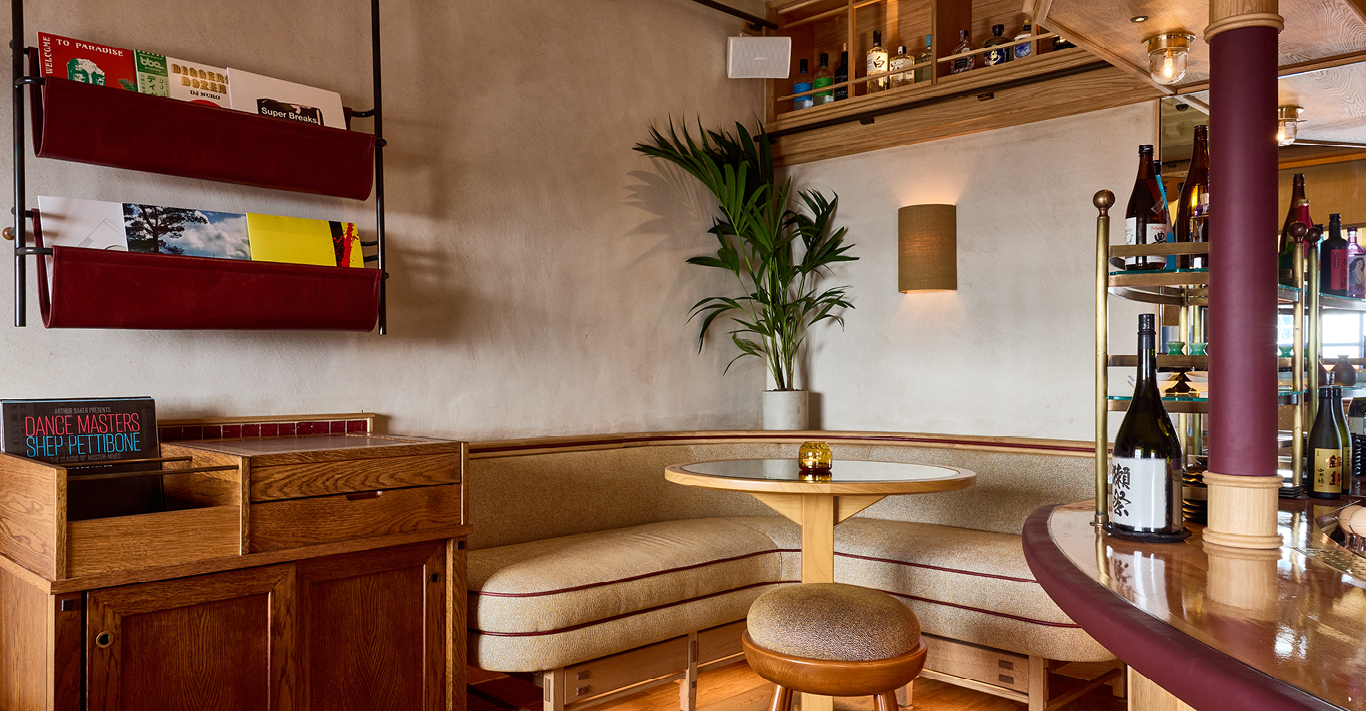WORDS
Chris Madigan
Tomatin’s most recent set of limited-edition releases is the Italian Collection. This follows French and Portuguese collections. What’s behind the choice of countries?
For this three-part series, we chose to celebrate Scottish connections with different countries, with releases finished in wine casks. France was an obvious starting point – at one point in the 1800s, Scotland was described as being “knee-deep in claret” because favourable tax on French goods made it cheaper to buy French wine there than in England. The French Collection featured finishes in casks from monbazillac, sauternes and rivesaltes dessert wines, as well as cognac. The Portuguese Collection celebrated the Scottish involvement in fortified wine in that country – families such as the Symingtons. So we used moscatel de Setúbal, madeira and tawny port pipes. The final collection celebrates the Scottish-Italian connection, which is less well known.
Yes, I think many people are aware of Scotland’s “auld alliance” with France and recognise Scottish names on their bottles of port, but what is the Scottish relationship with Italy?
Even people in Scotland don’t realise just how much Italian culture has influenced life here. And I think that’s because it’s a recent thing, in the grand scheme of things. The auld alliance with France goes back as far as the 13th century. The connection with Italy started with migration to Scotland in the early 20th century but it very quickly had a big influence on day-to-day life in Scotland, particularly around food and drinks, and the way that people enjoy company together. The numbers of Italian immigrants, compared with those from other countries, were not huge, but I’ve heard it said that, per capita, the influence of Italian expats on Scottish communities is greater than any other nation’s.

What form did that influence take?
The Italian immigrants arrived in Glasgow and Edinburgh but soon spread around the country. In any town in Scotland, you are likely to find an Italian name above a café, ice cream shop, sweetie shop or fish and chip shop. I grew up in Evanton, on the Cromarty Firth in northwest Scotland – one side of my family are Highland farmers, but the other side moved from the Clyde to work on oil rigs at the Invergordon sea port. In Evanton, the ice cream shop was Luigi’s; the chippie was Tony’s. Fish and chips came from Italian fritto misto di pesce and di verdure. We can thank Italians for deep-frying battered fish but we have to take responsibility ourselves for deep-frying a battered Mars bar!
And the connection goes both ways, doesn’t it? There’s what’s practically a Scottish town in Tuscany, isn’t there?
Yes, Barga – it’s where a lot of returning Italian Scots settled. A colleague of mine has been there and says it’s quite surreal… saltires, red phone boxes, fish and chips, and Scottish accents in a beautiful medieval hilltop village. But there’s another special connection between Scotland and Italy: single malt Scotch whisky. Not just Scotch whisky – single malt. Even today, more than 90 per cent of Scotch sold worldwide is blended; in the 1970s, there was very little single malt sold. Tomatin was the biggest producer of single malt in Scotland at that time. It had 23 stills, producing 12.5 million litres a year. Today, we produce two million a year and the focus is single malt. But, back then, 95 per cent of that whisky was destined for famous blended whisky brands. The other five per cent was bottled as single malt for the Italian market.
Was it due to a particular love of Tomatin?
No, Italy was the biggest single malt market in the world. It was truly astounding. At one point in the 1970s, the volume of single malt sold in Italy was greater than the volume of the biggest single-malt brand sales worldwide today. As I understand it, an Italian importer visited Glen Grant and just bought a case of single malt. It sold so quickly that he then ordered a container-full. They were another malt distillery serving blenders – they couldn’t believe he wanted their whisky unblended! And it expanded from there. One of the pioneers was Samaroli, still one of the most important independent bottlers in the whisky business. It was a real love affair.
What do you think it is about single malt that made Italians buck the blend trend?
Our partners there have always said that Italy is a country of collectors. You can find real surprises in bars there. One of my favourite examples is the Harp Pub in Milan. You go in there and it’s like any other Irish pub in the world, until you look at the back bar and start to notice some of the rather old bottles. If you ask Angelo, the proprietore, about it, he’ll take you through the back and down the stairs. You find yourself two floors under the city in a room filled with bottles of single malt whisky that were bottled in the 1970s and 1980s; distilled in the 1950s and 1960s. And he says he only has a few bottles. Some of the greatest malt whisky collections in the world are in Italian hands.
Is the Italian love affair with single malt still alive today?
Italy is still a country where flavour is everything – they appreciate complexity and sometimes challenging tasting notes. That love affair with single malt whisky died down for a while, but today it has been rekindled. And where we really see it is in cocktail bars around Italy, where bartenders are approaching cocktails in the same way that Italian chefs approach food – always searching for the finest ingredients. If you look at a cocktail list, you’ll struggle to find two whisky-based drinks using the same whisky. And that’s driving a new generation of Italians towards enjoyment of single malt whisky in Italy – it’s actually a really cool thing to be seen drinking.

What was the maturation process for the Italian Collection whiskies?
The whisky for the collection was all distilled on the same day in 2010, and aged in refill casks – barrels we’ve used several times, so there is virtually no sherry or bourbon influence on the spirit. That was vatted after 10 years, so there would be no age difference and no cask difference between the three whiskies. All that would separate them would be the final two-year finish in a different ex-wine cask.
What wines did you choose?
This collection offered us an opportunity to explore different flavours because, when you look into the history of Scotch whisky production, casks from Italy have been a rarity. The one exception is marsala. In the 18th century, bad weather forced a Liverpool merchant called John Woodhouse into port in Sicily. There, he discovered the local fortified wine and began to import it. So marsala casks were traditionally available to age whisky in. But we haven’t used one of those super-sweet marsalas people immediately think of. It was a semi-secco, so the honey and spice really balance out well, along with the apple and pear flavours you’re going to get from the Highland-style Tomatin spirit.
Then there is an amarone finish.
This is at the heart of the collection – amarone della valpolicella, from the Veneto region. My own introduction to amarone was sitting at the docks in Venice with my wife, watching the sun go down, the gondoliers go past, and drinking a bottle of amarone. So, a very romantic memory. But it’s also a style of wine that harmonises really well with whisky. The appassimento process, where they lay out the grapes to dry, increases the sugar and acidity in the grapes. But rather than producing a sweet wine, it intensifies the red fruit flavours. For me, the Tomatin Amarone Edition has bright redcurrant and a dried cranberry element to it. There is an underlying spice, a little bit of citrus, but it’s red apples and red fruits that really come through, with a hint of tart rhubarb.
And finally, a barolo finish…
Amarone has started to get some love from distillers. But there have only ever been a few very limited whiskies matured in barolo casks. Compared with the amarone, this Piedmont wine, made from the nebbiolo grape, gives the whisky a more silky mouthfeel. There’s a more floral element to the aroma – a hint of rosewater, turkish delight. On the palate, you still get red fruits but more blackcurrant and blackberry coming through. And a bit of dark chocolate too. It’s lovely to see that all three whiskies have similarities but there are very noticeable differences as well.





